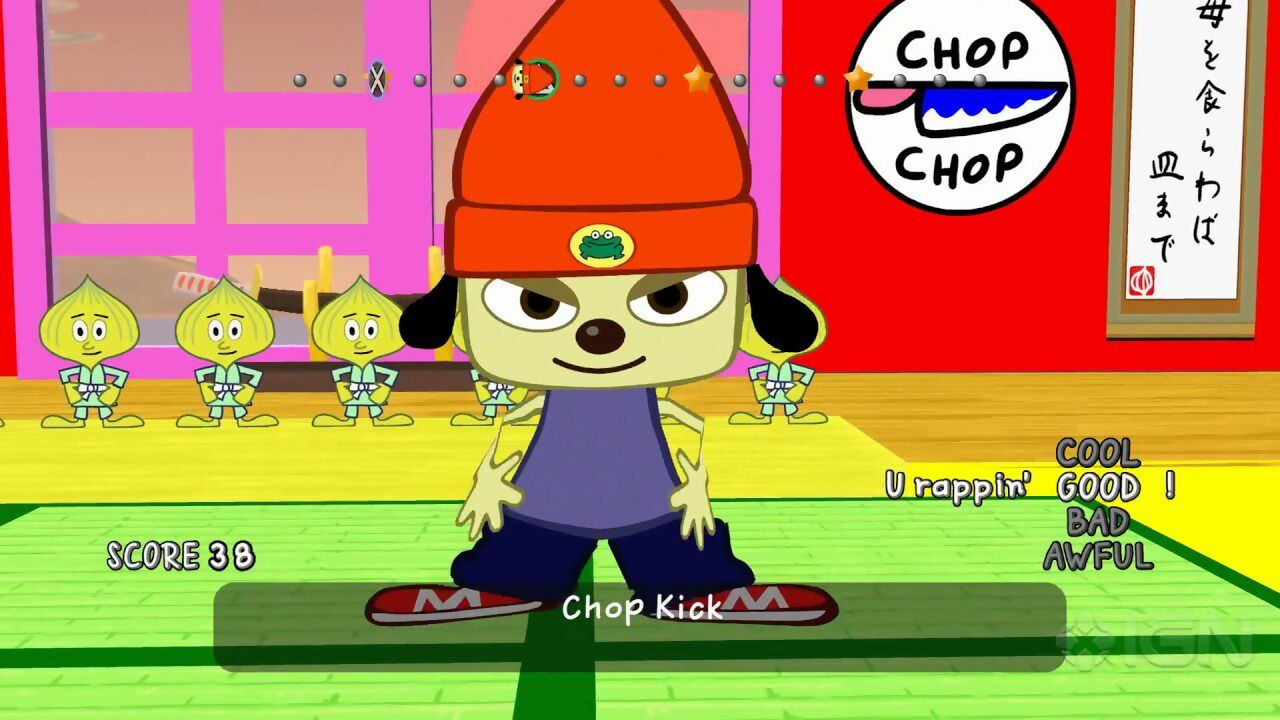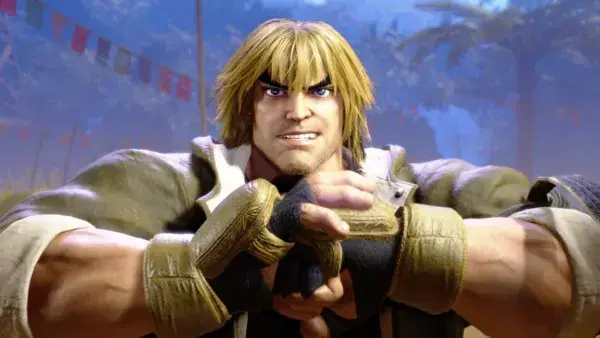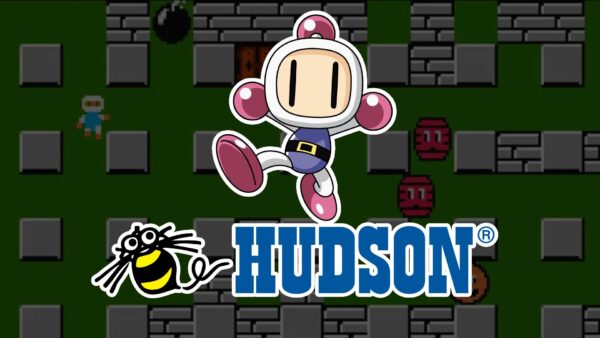
Manic Miner, Gun Fight, PaRappa the Rapper… Mr Biffo asks, why were early game themes such earworms?
I’m not sure when I first noticed the music in a game. With hindsight, I can now appreciate that Space Invaders’ iconic, four-note, dum-dum-dum-dum beat was music of sorts, but my formative brain interpreted it more as a sound effect. It was, to young Master Biffo, the steady thrum of the Invaders’ engines as they descended to the surface. By the same token, John Williams’ classic NER-NER… NER-NER… Jaws theme is just a noise that all great white sharks make.
The first in-game music I can actually remember clearly – to the degree that I still hum it today in its original chiptune tempo – was from Midway’s influential 1975 arcade shooter Gun Fight. Specifically, the hyperactive blast of Chopin’s Piano Sonata No. 2 that plays when a character dies (to be replaced immediately by a gravestone, just like in real life). No, I’m not so cultured that I knew automatically that it was Chopin’s Piano Sonata No. 2. Knowing it better as the Funeral March, I had to look up its actual title.

Gun Fight was one to work some serious audio magic, despite its quaint visuals.
There’s some argument over whether Gun Fight featured the first use of music in a game, but rather than slip my head into that bear/orchestra pit, I’ll stick with merely saying that it’s the first actual music I recall hearing.
What is undisputed is that Gun Fight was the first game to use a microprocessor, and the first game to feature human versus human combat, and the first with an on-screen depiction of character death. Consequently, I’d argue that there wasn’t another tune more synonymous with dying until Sonic The Hedgehog started drowning.
And I loved it. Now that I think about it, Gun Fight (not to mention its much fancier sequel, Boot Hill) may have been the first video game I ever played. It’s interesting that its music has endured in my brain whereas the soundtrack to… I dunno… Horizon Zero Dawn – good as I remember it being – didn’t.
TOO MANY NOTES
It’s as if the more cinematic game music became, the less of a grip it held on my memory. Consider now the music in Pac-Man, Donkey Kong, Skool Daze, Super Mario Bros., Manic Miner… they worked because of their limitations. Has the Mario series improved on Koji Kondo’s original composition by employing real musicians to play all the instruments? I’d wager that if a recipe is already perfect, adding extra ingredients is unlikely to improve upon it.
The nineties were a decent time for game music – see Bobby Prince’s grinding DOOM and Duke Nukem 3D soundtracks – but as we drifted further into the CD-ROM era, there seemed to be fewer and fewer earworms. This was the age when every game developer seemed to wish they were making movies.

Today’s blockbuster games have got nothing on the likes of Magic Miner
Admittedly, though a long way from Gun Fight, I continue to have a soft spot for the beautifully sporadic score of the original. But, again, I never walked down the street whistling it.
CHANTS IN A MILLION
The last time I remember really engaging with game music was the borderline Gregorian opening to the original Halo theme (and that was 2001!). It wasn’t exactly the sort of thing you could hum along to though, and – again, pretty as it is – after the opening chants it drifts into generic blockbuster movie score territory.
Try it yourself: try recalling a single theme from the last ten years of blockbuster games. Now try doing the same for any game made before 1990. Heck, even pre-1995; F-Zero on the SNES has one of the most singalongable soundtracks ever made. Less so F-Zero X.
Why do those old game tunes seem to stick more? Music psychologist Dr Vicky Williamson told the BBC in 2012 that repetition is one of the key reasons music gets earwormed into our brains. Obviously, the older the game, the less memory it had for music… which is why you’d often just get a burst of The Birdie Song, such as at the start of Chuckie Egg, or In The Hall of the Mountain King repeated on an endless loop in Manic Miner. Cue: earworm.
Surprisingly, another trigger for earwormery (as I’m now calling it) is stress. A woman in Dr Williamson’s survey reported getting a Bananarama song, of all things, stuck in her head while revising for an exam. Consequently, the same song would replay whenever she went through a stressful period in her life. According to research, there’s even more likelihood that a tune will get stuck in your ear if you’re performing repetitive activities (such as revising, or gobbling power pills from the floor of a maze) while undergoing the stress.
Repetitive activities and tunes? Stress? Sounds like video games – and early video games in particular – were the perfect recipe for an earworm pie.

It’s impossible not to sing along to F-Zero’s tracks
KICK! PUNCH! IT’S ALL IN THE MIND!
1996’s rhythm game PaRappa the Rapper boasted some of the most epic earworms in gaming history, but after development was completed… not everyone even knew if it qualified as a game. It seems bizarre now, but when Sony Computer Entertainment took delivery of Masaya Matsuura’s finished product, it was so different to anything that had gone before that they didn’t know how to market it.
Matsuura, who until then had been a musician in the J-pop band Psy · S, conceived the is-it-a-game? as a way to get out of appearing in his own music videos. However, even he was unsure how it would be received, telling PlayStation.Blog in 2017 that his uncertainty continued “for another six months after release”, adding “The thing I was most surprised about was that players actually considered PaRappa as an actual game”.
Not just a game… but probably the first game where music wasn’t just incidental, but the central gameplay mechanic. PaRappa begat Dance Dance Revolution, which begat GuitarFreaks, which gave us Donkey Konga, Samba de Amigo, Guitar Hero, Rock Band, Cadence of Hyrule…





